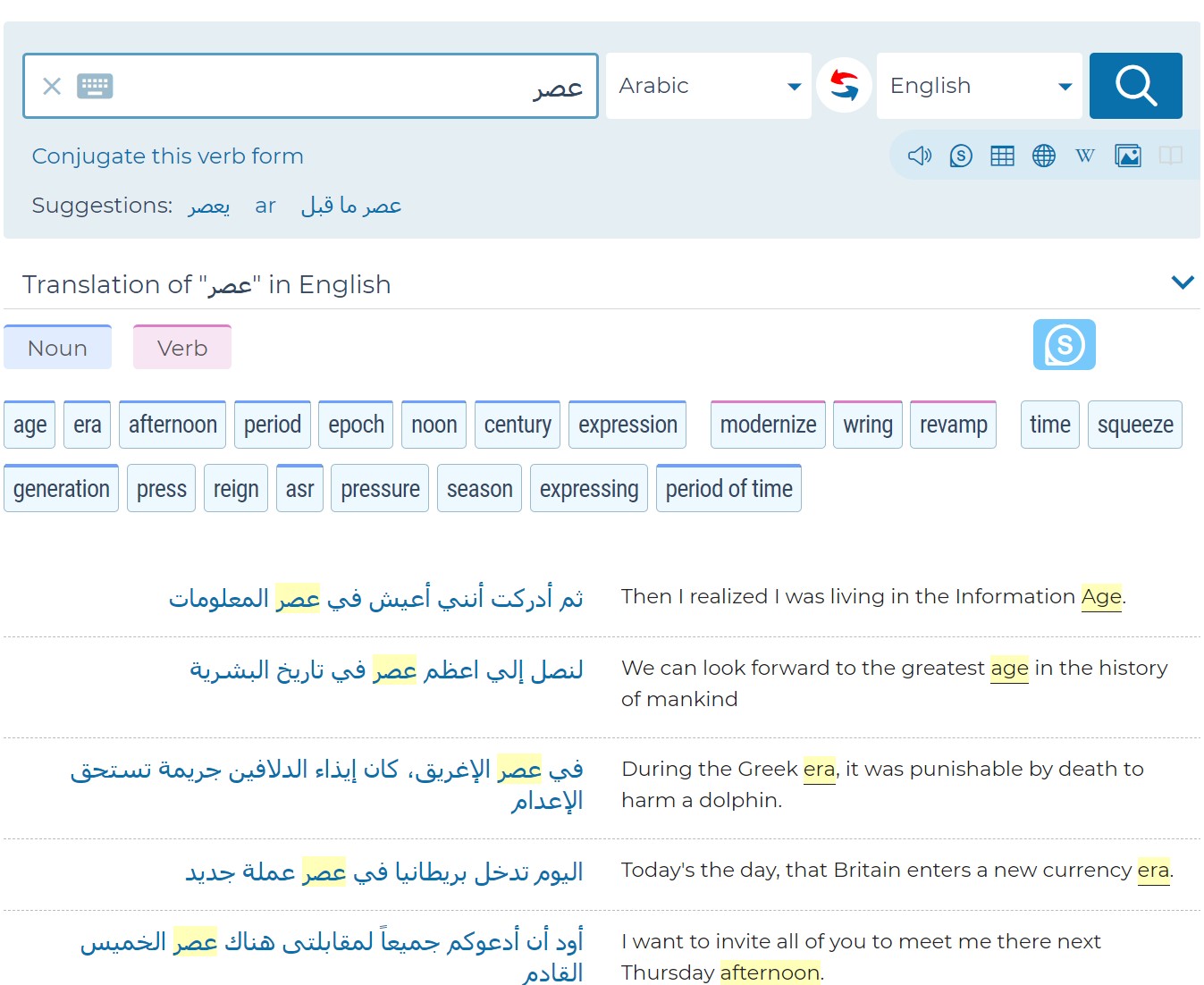Arabic—Tunisian Dialect
Online resources for learning Tunisian Colloquial Arabic (TCA)
Although it is relatively easy to find a slew of online resources for learning MSA and common dialects, it can be more challenging to find resources for Tunisian. Below is a list of some resources for Tunisian Arabic as well as some indispensable resources for MSA that you may wish to consult.
Resources for TCA
Derja Ninja https://derja.ninja/
Probably the most useful website for TCA learners, Derja Ninja is a TCA–English dictionary that has over 17,000 entries. Every entry includes a sample sentence, and every sentence is spoken by a real human!
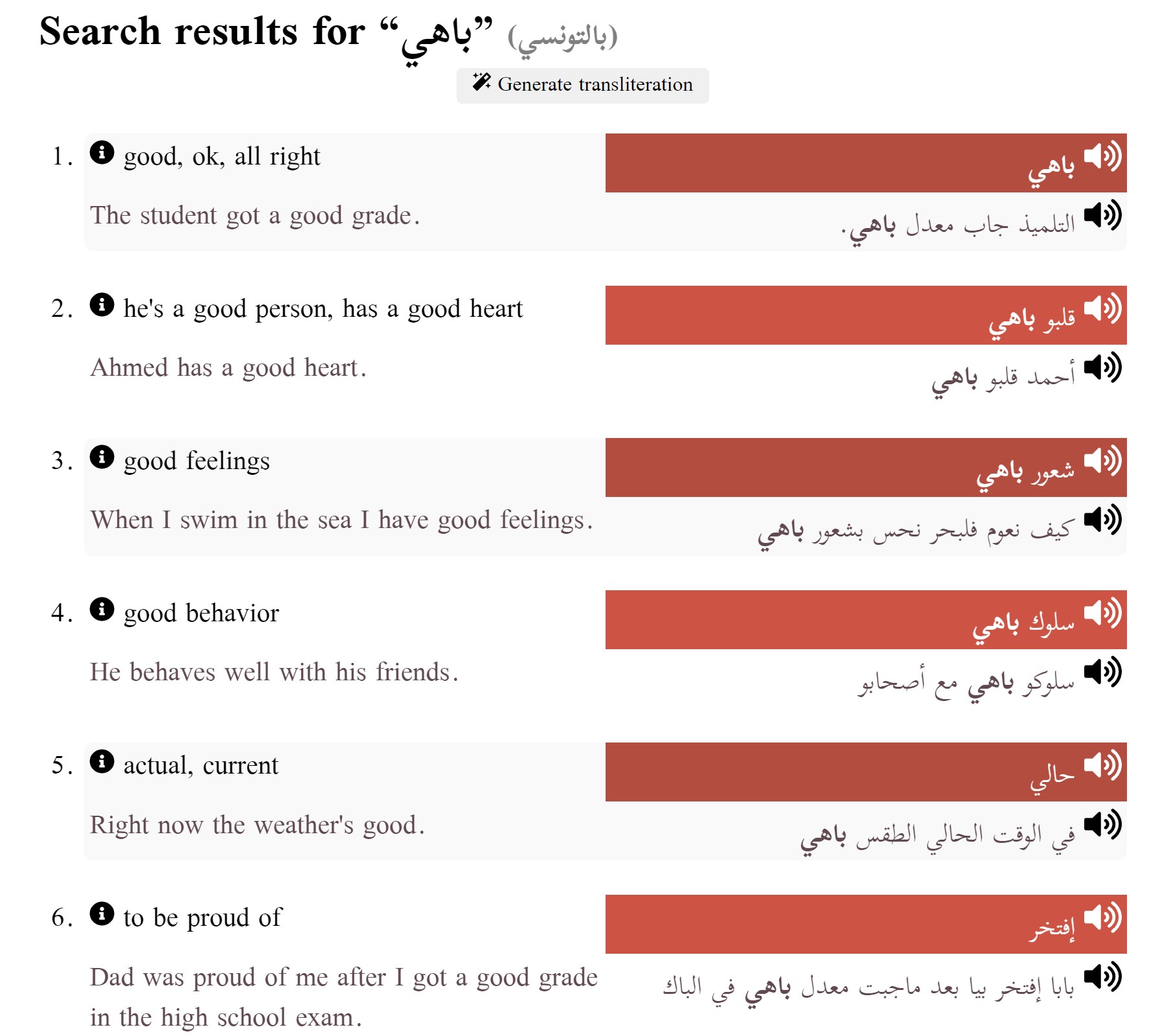
Playaling https://playaling.com/
Playaling is one of the best online resources for learning all forms of Arabic, including MSA, Educated Standard Arabic (ESA), and dialects. Videos all include subtitles, and you can click on a subtitled word to see it translated. Videos can be sorted by variety of spoken Arabic, but unfortunately all Maghrebi dialects are lumped together as “North African Darija,” and most videos in this category are in Moroccan, which is less useful for learners of Tunisian. However, there are videos to be found in TCA, it just takes some digging.
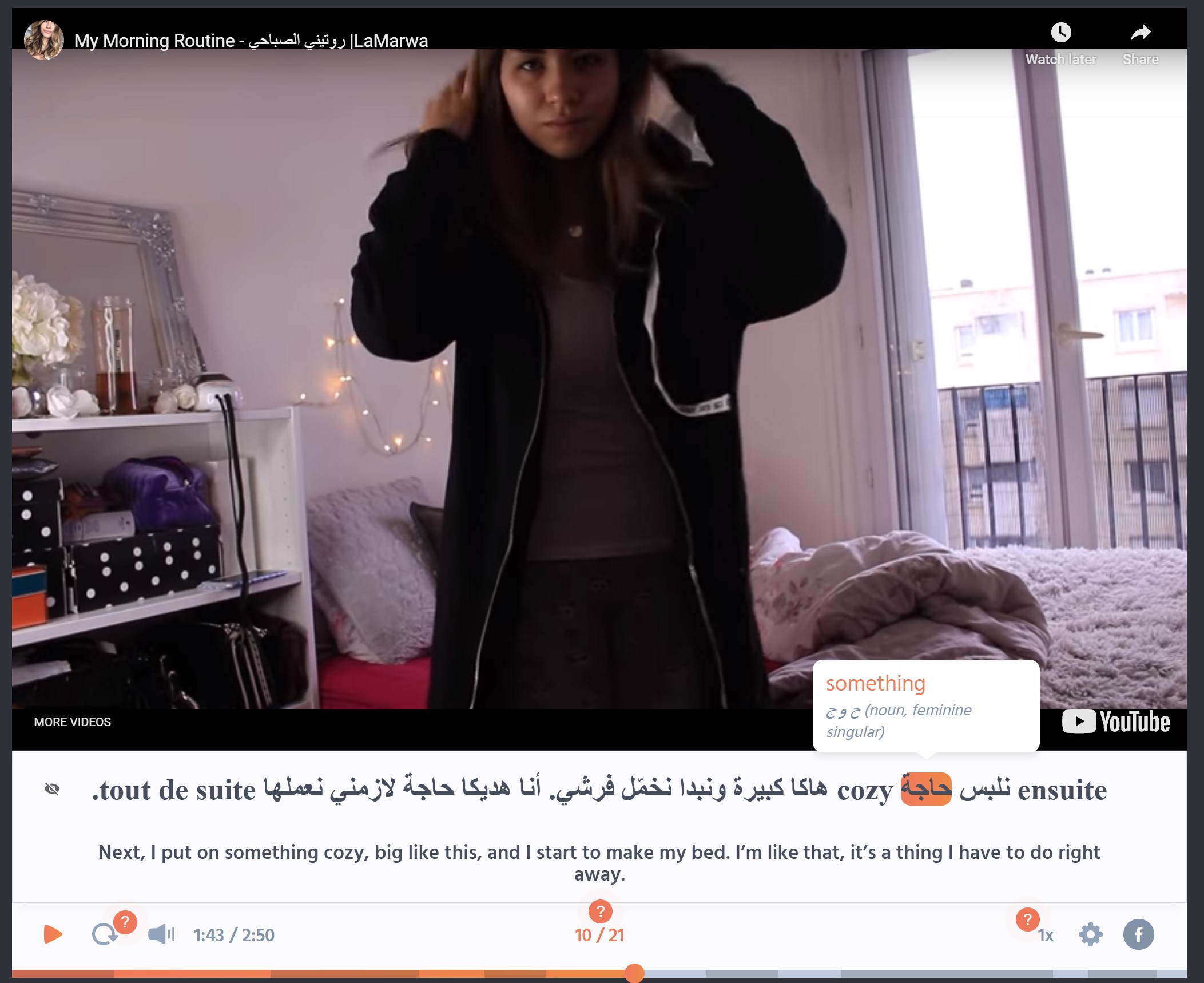
Talk in Arabic https://www.talkinarabic.com/
Talk in Arabic includes hundreds of videos and audio files in dialect, all of which include subtitles and transcriptions. Unfortunately, the repository of Tunisian material is scant at this time (and includes only audio, no video), but learners of other dialects, like Moroccan, will find a wealth of videos.
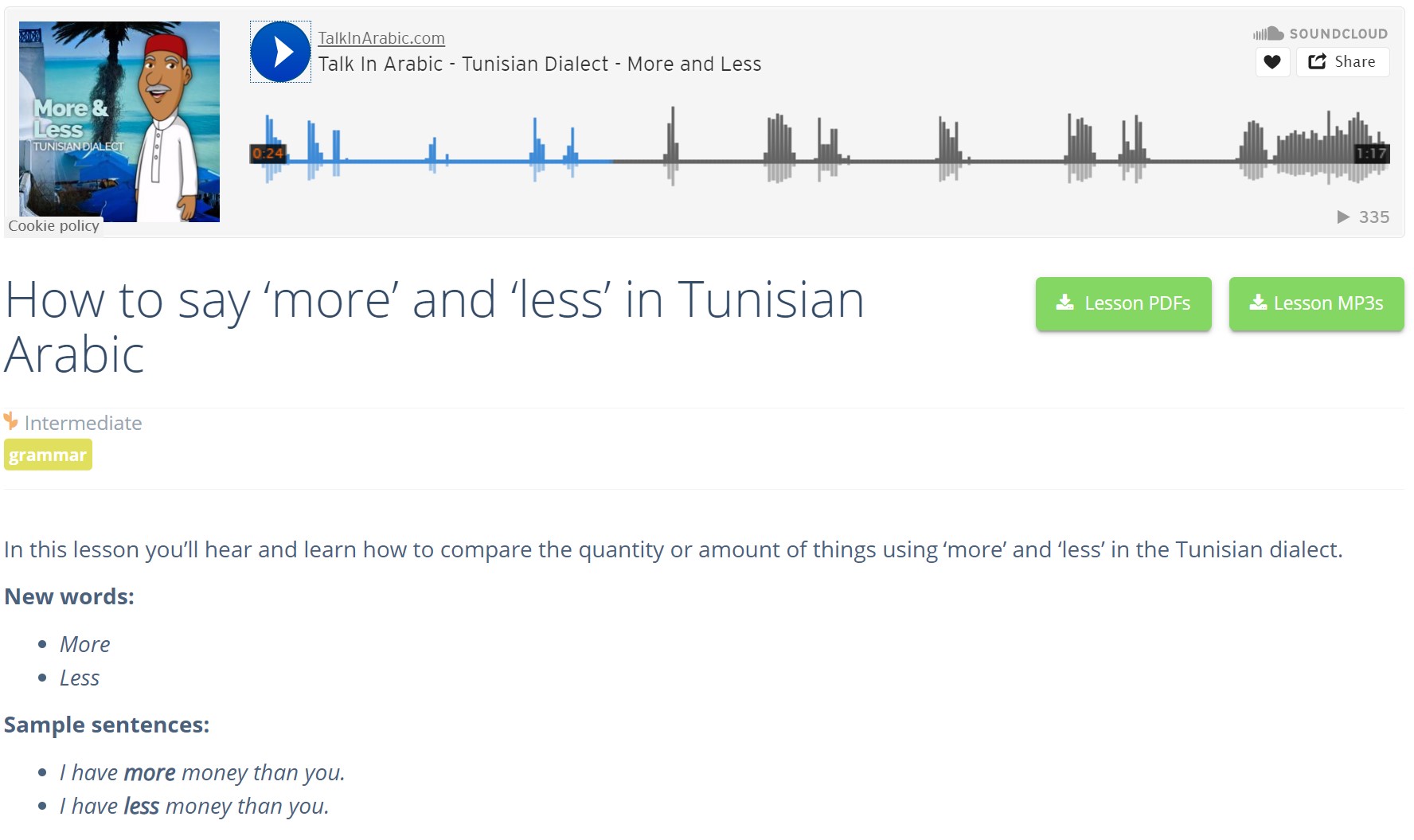
Other resources
As you learn Tunisian Colloquial Arabic, you will encounter many words that you already know from MSA but have slightly different meaning or pronunciation in TCA. As you work to understand the differences between MSA and TCA, you may wish to consult high quality online dictionaries. Here are my two favorite:
The AraMaster http://thearamaster.com/
Budding Arabists will love this resource. When you search a word, it provides a very clean chart that displays the root (with a link to its entry in the online Hans Wehr), the part of speech, the form, and the meaning of each word matching the search. If you search for a verb chart, you can find every form that exists for any given root, with meanings. Here are examples of how information is displayed:
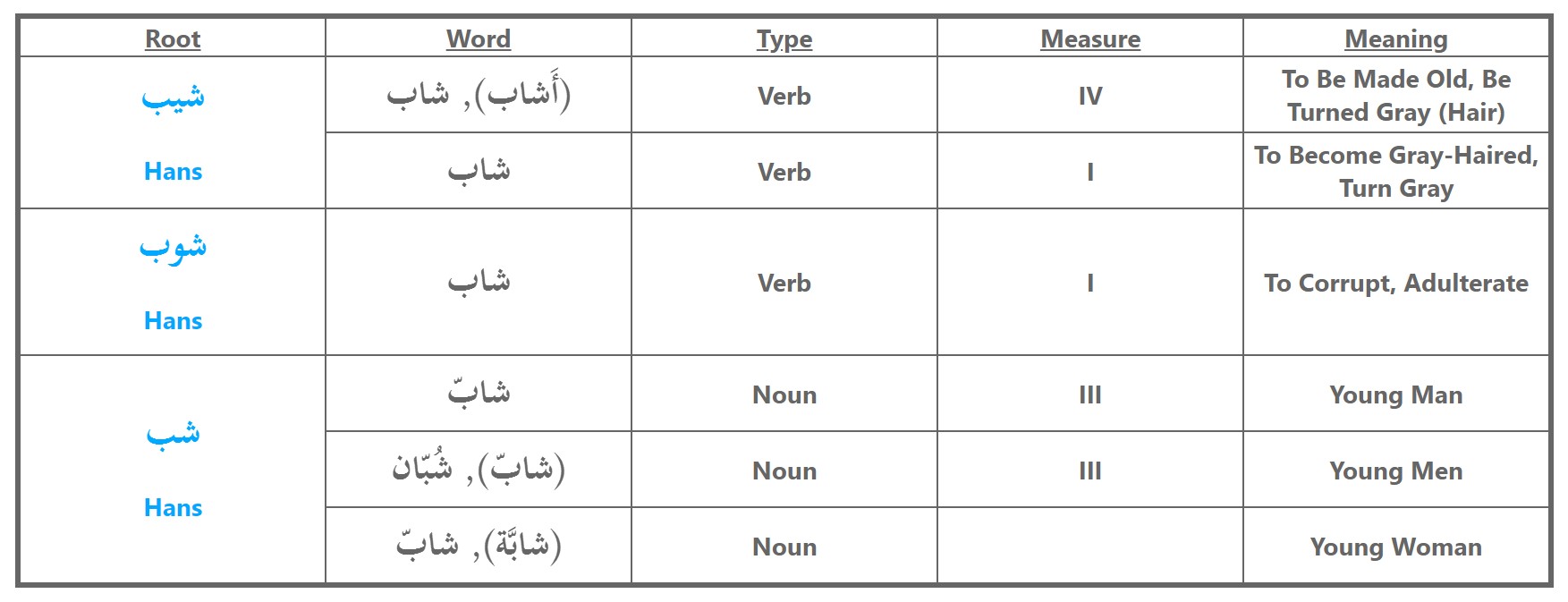
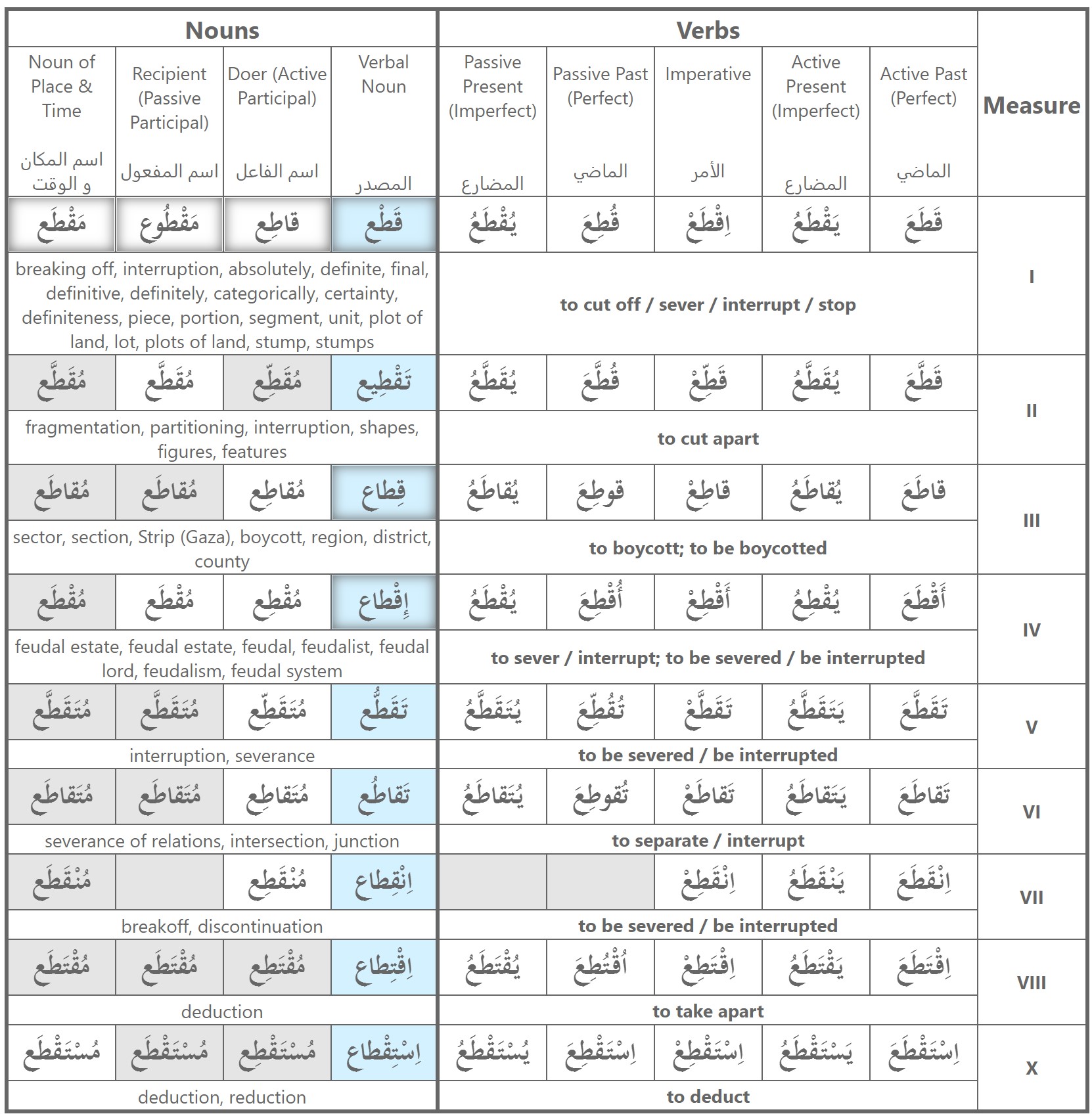
ReversoContext https://context.reverso.net/translation/arabic-english/
This resource is similar to Almaany—which other posts have mentioned—in that it is a repository of sentences translated in English and Arabic. However, I find that Reverso is easier to use as a native English speaker, its context sentences are more useful, and it has the additional functionality of built in speech to text, which actually works pretty well. Reverso draws on many sources of professionally translated speech and text, but it relies very heavily on film subtitles, making it useful for students interested in how words are used in more natural speach. Like Almaany, is also draws on technical documents, government documents, and books. When you search a word in Arabic, it will provide all possible translations of the word as well as example sentences. If you select a particular translation, it will only show you example sentences with that translation, which can help you figure out how to achieve the connotation you’re striving for.
